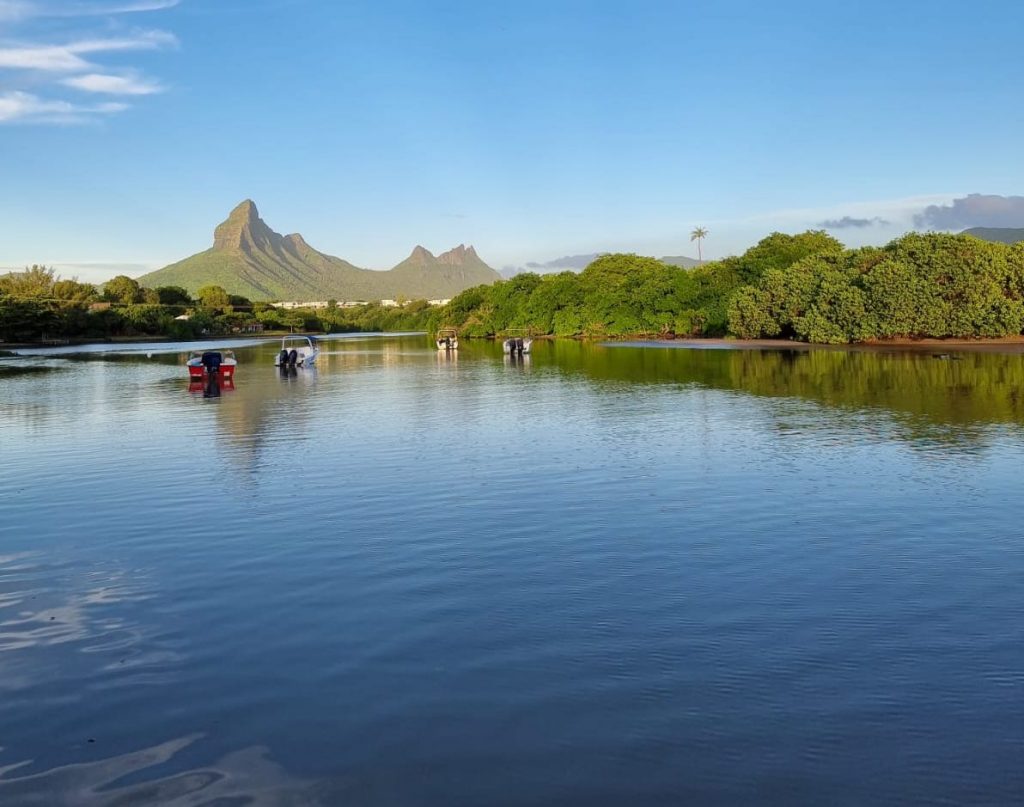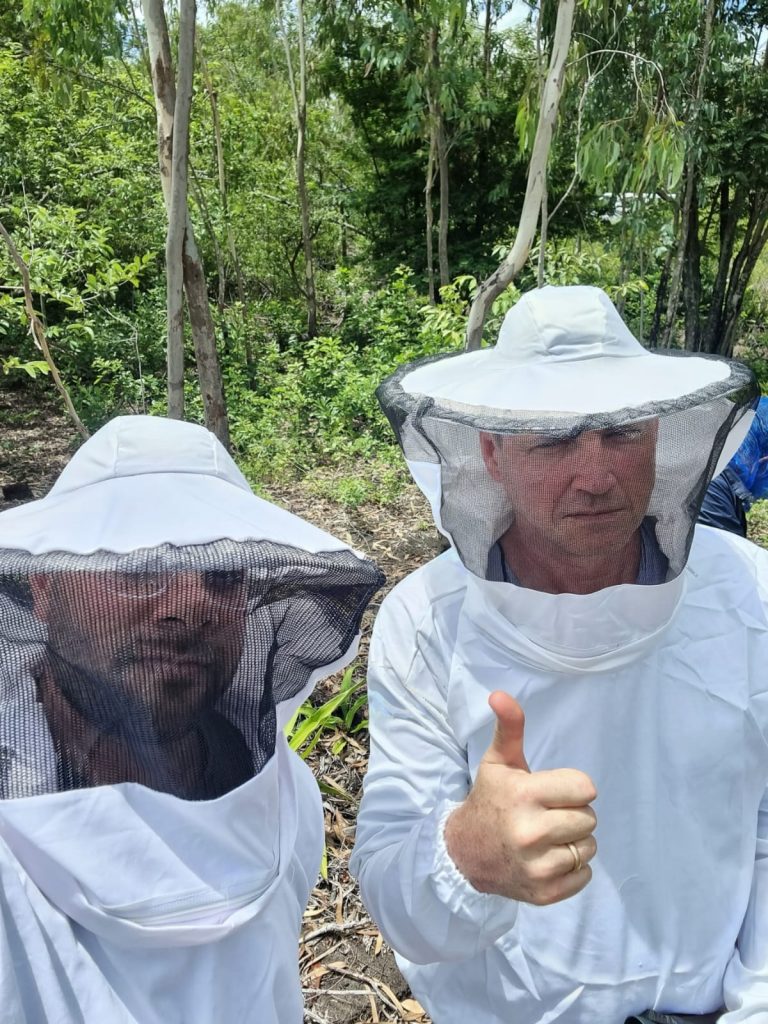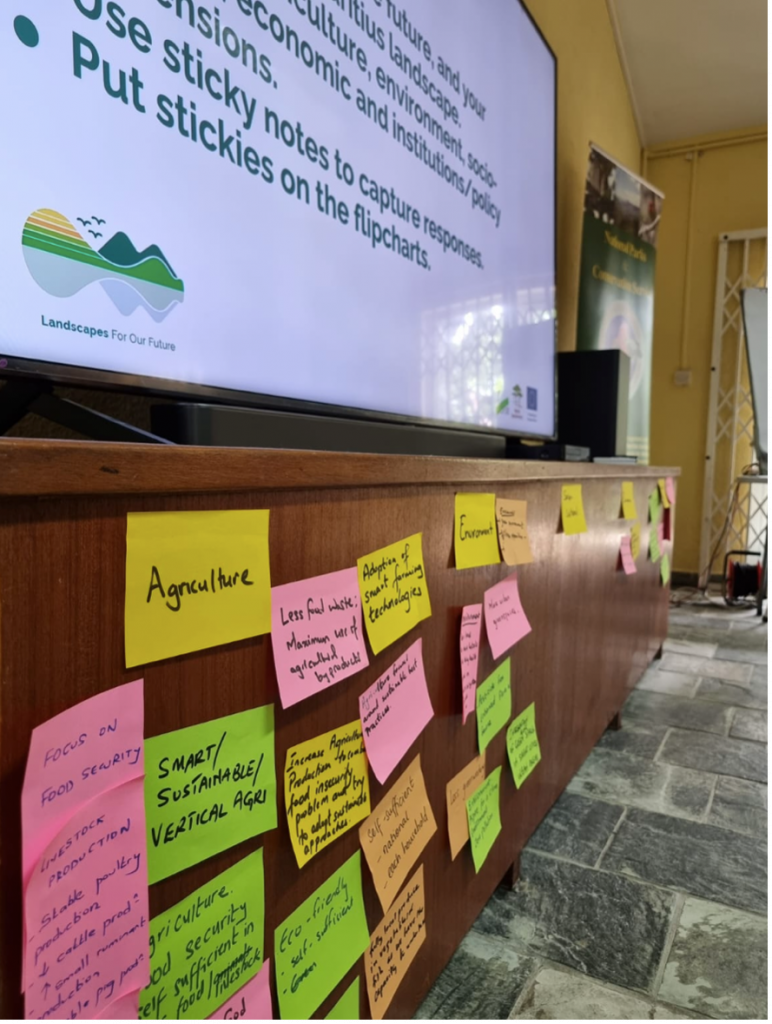
Mauritius is famed for its crystal-clear waters and white sandy beaches. This beautiful island is also characterised by a high number of endemic species found nowhere else in the world.
One of the most critical landscapes, and key to the Mauritius from Ridge to Reef (R2R) project, is the Black River Gorges National Park. Covering an area of around 6,500 hectares, the park is home to many of the island’s rarest species, including the Mauritius kestrel, the pink pigeon, and the echo parakeet. In a broader context, Mauritius forms part of the Southwest Indian Ocean Biodiversity Hotspot, in what is known as the Mascarene Archipelago, globally admired for its large numbers of endemic plant and animal species.
Many of these ecosystems are, however, being degraded by deforestation, land-use change, and invasive species, which have seen native forest areas diminish significantly since 1835. At present, they cover only 2% of their previous range, and 89% of endemic flora are considered threatened with extinction.
Who’s who
The responsibility to conserve and expand these globally relevant ecosystems is placed on the shoulders of the team from the National Parks Conservation Services (NPCS), which was established in 1994 to manage the native terrestrial biodiversity of Mauritius and to retain its genetic diversity for future generations.
About R2R
The Mauritius from Ridge to Reef project works in various national parks around the island, including the Black River Gorges National Park (BRNP), Bras D’eau, and Ile Ambre where the project is principally focused on restoring and increasing native forest cover. Here the R2R will focus on the removal of invasive species, the replanting of indigenous and endemic species, and the reforestation of non-forested areas outside the national parks, in the catchment area around the BRNP where state-owned agricultural land is leased to farming communities. These areas are targeted for the expansion of indigenous forest cover through “steppingstones” or connectivity corridors and will require the engagement of farming communities. The project is also targeting mangrove areas immediately surrounding the shores of the island to improve mangrove health to act as a protective shield and buffer against sea-level rise. Healthy mangroves further support the creation of fish nurseries and improve the availability of animal protein and food security for the local population.
What we learned

One of the core activity areas of the Central Component is gathering the knowledge and lessons generated from the implementation of the 22 ILM projects in the programme. With this, we assess where we can support the LFF projects, and identify experiences that might be of use to other projects in the programme (what we call “cross-learning”).
The NPCS is primarily focused on conservation and restoration within national park boundaries. The ambitions under the R2R project are an expansion of their mandate and intention to work with diverse actors across the island to enhance and to extend their goals. This will require the deployment of mediation, institutional flexibility, and convening capabilities to achieve ILM outcomes. Here is a sample of our findings about the project they lead, centred around the six ‘dimensions’ of ILM we have identified.
Pictured: Khalil Walji (left) and Kim Geheb (right) give the bee-keeping outputs an earnest thumbs-up.

Stakeholder identification

The project collaborates with several key stakeholders across the landscape including partners in various government ministries, NGOs, and academia. The first event to engage stakeholders in the project was a workshop held during the visit of the Central Component (CC) which provided an overview of project objectives and worked to create a unified common vision for Mauritius. The project does not have a fully-fledged Theory of Change (ToC) to guide project implementation. ToCs are important, because they can help projects to theorise the strategies and approaches that they will use to generate outcomes. For the LFF, outcomes represent behavioural changes: stakeholders do things differently, to support the R2R project’s objectives, and to maximise the value that it brings. To achieve this, all projects need to have a good understanding of the stakeholder landscape, and the relationships between them.
The CC uses an approach called Net-Mapping to map out stakeholders and the dynamics amongst them to inform the creation of a Theory of Change.

Multi-stakeholder fora (MSF)
An MSF has not been created for the R2R but is acknowledged as necessary for the success of the project, especially given the number of relevant government ministries and project partners. In lieu of creating a new forum, the potential to exploit existing spaces for dialogue is being explored. One promising option is a new Inter-ministerial Forum for Climate Change, which could act as a platform for integration.
A critical aspect of the successful function of an MSF is the skill sets needed to convene, mediate and engage stakeholders. The NPCS team does not at present have this in-house capacity but would seem very keen to bring in these skill sets, as well as look to the project partners, who may be best placed to co-convene and facilitate this forum.

Common vision

The R2R project did not have a commonly-agreed-upon vision for its landscape. During a one-day workshop with 40+ participants, project stakeholders began to define a common vision for the R2R project. A co-created vision can be immensely powerful as a ‘north star’ behind which project stakeholders and activities can be organized.
Participants were asked to explore their vision for Mauritius 10 years into the future and to consider agricultural, economic, and environmental dimensions. Group discussions were held to further flesh out common challenges to achieve this vision and who needed to work together to arrive at this future state.
“A circular blue and green economy in Mauritius that supports linking the environment with livelihoods through:
- A sustainable and productive agricultural sector that enhances food security and self-sufficiency.
- Environmental management across all land uses with less waste and more renewable energy.
- A diversified economy that operates within biophysical boundaries and supports equity and better lives for all.
- Harmonization of policies and legislation with better enforcement and supporting greater awareness, inclusion, and empowerment of people in decision-making for environmental outcomes.”
– The proposed vision for Mauritius, which emerged from the workshop.
(This vision was not endorsed and is presented as a working draft.)
👉 Explore the post ‘6 Ingredients to ILM’, which features the key aspects of defining a common vision.

Institutionalization
The NPCS and R2R is well institutionalized into the Mauritian government, given their role as service under the Ministry of Agro-Industry and Food Security. Although they are well placed, the creation of an MSF should also be developed with sustainability in mind, to ensure it serves as a common space for dialogue for the R2R, but beyond it as well.

Iterative and adaptive management
It is early days for the project, but the NPCS team’s experience suggests that it has well-established systems to monitor project interventions and progress. How these systems are used in the iterative and adaptive management of the programme is less clear. The CC suggested these areas should be prioritized through annual technical and steering committee meetings, as well as prioritizing the monitoring and feedback to enable the team to course-correct where necessary.

Technical solutions and tools
The project’s knowledge of its biophysical and ecosystem conditions is high. Its in-house and project-based systems for monitoring these trends are well established, although they indicated the need for increased capacity, and systems that can be better used for adaptive and iterative management and to generate evidence to inform policy at higher levels.



